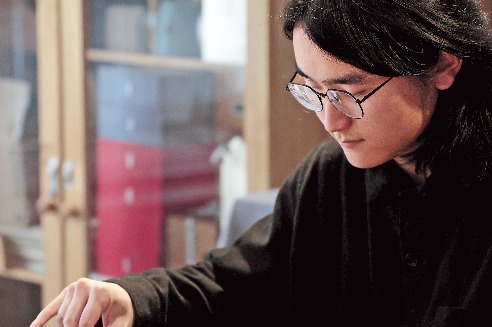Wuhan skills help fight virus cases in Jilin


Beijing team shows medical workers at 16 hospitals how to collect test samples
About 50 days after Zhang Han, a 27-year-old researcher at the Chinese Academy of Medical Sciences and Peking Union Medical College, returned to Beijing from Wuhan, Hubei province, the Chinese city hit hardest by COVID-19, she received a notice that took her back to the front line of the battle against the disease.
A new cluster of infections had emerged in Northeast China's Jilin province, and local testing capacities were overstretched in dealing with confirmed patients, their close contacts, suspected cases, and people with fever.
On May 19, Zhang, along with eight other researchers, arrived in Jilin city. At the Hospital Affiliated to Jilin Medical College, they met up with four support personnel who had driven two trucks from Beijing-one a mobile P3-level biosecurity laboratory and the other one to power it. Six more researchers were deployed there on May 25 to ramp up testing.
Liu Haiying, deputy director of the Institute of Pathogen Biology at the Chinese Academy of Medical Sciences and Peking Union Medical College and the head of the team sent to Jilin, said it could now process at least 800 samples a day.
"The experiences we gained in Wuhan are very precious and helped us better cope with new outbreaks," she said.
Setting up a temporary P3-level lab, the second-highest level in a four-tier system, requires rigorous preparations, Liu said.
"After we were notified of the mission to assist Jilin, we rushed to carefully choose and assemble medical supplies, reagents, testing kits and other apparatus," she said. "What we learned in Wuhan helped us select the most useful equipment and adequately gear up."
More importantly, most of the laboratory workers who went to Jilin had spent more than a month in Wuhan, assisting in testing patients at fangcang shelter hospitals-temporary treatment centers converted from public facilities.
"The team members have internalized a keen awareness of biosafety protocols and are skilled at diagnostic work regarding COVID-19 cases, from inactivating samples to analyzing the results," Liu said.
Zhang, the young researcher, said whether in Wuhan or Jilin, preventing cross-infections and ensuring the precision of test results have been the overarching principles guiding their work.
"Because nucleic acid tests are highly sensitive, the trucks we've brought to Jilin must be placed in an area that is not downwind of the wards with COVID-19 patients," she said.
Inactivated samples deemed safe to be handled in a qualified biosafety laboratory outside the mobile one are carried to work stations set up in refitted rooms in the hospital for further extraction and examination.
"We know from experience in Wuhan that it would be safe to put on regular white gowns instead of full protective suits," Zhang said. "With fewer movement restrictions, we are able to accelerate the testing process while ensuring safety and accuracy."
However, there were some new challenges the team had not previously encountered.
In Wuhan, Zhang was part of the team testing mild cases admitted into a fangcang shelter hospital in Dongxihu district. "The samples were relatively uniform because they were all from confirmed patients with mild symptoms, so the process was streamlined and clear," she said.
But in Jilin, the pool of samples was much more varied.
Liu said that in addition to confirmed cases, they also dealt with samples sent from fever clinics across the city, as well as a large number from close contacts and suspected infections.
"At the beginning, the samples we received had come from different tubes or were marked with different numbers, which meant sorting them out took a long time," she said.
Starting on May 25, the team began training local medical workers at the 16 hospitals with fever clinics, showing them how to implement standard sample-collection procedures.
"Through training them and coordinating work between us and local medical workers, we were able to cut the time spent on the initial stage of organizing and inactivating samples by more than an hour," Liu said.
One of the most demanding assignments in Jilin has been to complete mass screening programs within a limited period. Such tests usually cover residents in an entire residential block with confirmed infections.
"One day, we were asked to finish nearly 2,000 samples as soon as possible, along with lab workers from the Chinese Center for Disease Control and Prevention," Liu said. "The samples came in at about 8 pm, and we powered through to about 4 am the next morning to finish all tests."
She said underpinning the intensive pace of work was a collective sense of teamwork and rapid mobilization of resources to solve problems.
"All workers on site are very hands-on and passionate about their job despite the mounting pressure, and the local authorities are also highly responsive to our requests," Liu said. "We have firmly bonded together to overcome difficulties."
Jilin province has not reported new cases for several days.
"Our workload remains heavy. The daily number of samples collected from fever clinics is consistent, and there are still demands for testing of suspected or confirmed cases at hospitals," Liu said.
"We are also planning to pass on the knowledge about how to conduct and analyze tests to local health workers, which will be the next core mission of the team."





































